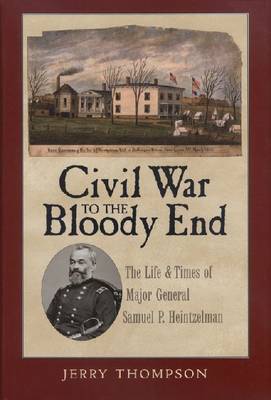Canseco-Keck History
2 total works
In 1861 and 1862, in the vast deserts and rugged mountains of the Southwest, eighteen hundred miles from Washington and Richmond, the Civil War raged in a struggle that could have decided the fate of the nation. In the summer and fall of 1861, Gen. Henry Hopkins Sibley raised a brigade of young and zealous Texans to invade New Mexico Territory as a step toward the conquest of Colorado and California and the creation of a Confederate empire in the Southwest. Of the Sibley Brigade's sixteen major battles during the war, their most excruciating experiences came during the ill-fated New Mexico Campaign. Civil War in the Southwest tells the dramatic story of that campaign in the words of some of the actual participants. Noted Civil War scholar Jerry Thompson has edited and annotated eighteen episodes written by William Lott ""Old Bill"" Davidson and six other members of Sibley's Brigade that were originally published in a small East Texas newspaper, the Overton Sharp Shooter, in 1887-88. Written ""to set the record straight,"" these veterans' stories provide colorful accounts of the bloody battles of Valverde, Glorieta, and Peralta, as well as details of the soldiers' tragic and painful retreat back to Texas in the summer of 1862. With his extensive knowledge of Sibley's campaign, Thompson has provided context for the eyewitness accounts-and corrections where needed-to produce a campaign history that is intimate and passionate, yet accurate in the smallest detail. History readers will find much to ponder in these unique first-person recollections of a campaign that, had it succeeded, would have radically altered the history of the Southern Confederacy and the United States.
If President Lincoln could have unmade a general, perhaps he would have started with Samuel Peter ""Sourdough"" Heintzelman, whose early military successes were overshadowed by a prickly disposition and repeated Union defeats during the Civil War. By the time his friend Robert E. Lee left Arlington to lead a Rebel army against the bluecoats, Heintzelman had already seen duty in Mexico, established Fort Yuma in California in 1850, mined for silver in Arizona, and ably led U.S. forces on the Texas-Mexico border during the 1859-60 Cortina War. During the Civil War, he was in the forefront of the fighting at First Bull Run and the disastrous 1862 Peninsula Campaign. He commanded the III Corps of the Army of the Potomac at the siege of Yorktown and in the ferocious fighting at Williamsburg, Fair Oaks, Oak Grove, Savage's Station, Glendale, and Malvern Hill. Although he aspired to succeed General George B. McClellan, he was relieved of his command after his troops were badly mauled at Second Bull Run. After demonstrating his inability to guard the southern approaches to Washington, D.C., from Virginia guerillas, he spent the latter part of the war administering prison camps in the Midwest, keeping a watchful eye on Copperhead subversives, and quarreling with more than one disgruntled governor. In early Reconstruction Texas, Heintzelman struggled with the conflict between former Secessionists and Radical Republicans. Despite his failures, Heintzelman remains among the most fascinating military figures of nineteenth-century America, if only for his broad involvement across much of the South and West during this pivotal era of the nation's history. By mining Heintzelman's massive journals and countless historical archives, Jerry Thompson has not only provided a retelling of the personal history of a frustrated general but has also given readers a richly textured account of the events, the political crosscurrents, and the times in which ""Sourdough"" won his unenviable reputation.

